Geelong Grammar School
Corio
All Saints' Chapel
B 1909 Hill & Son, London for 'Dalvui', residence of Niel W.Black, Noorat (job no 2371);
rem 1911 & inst present loc 1915. Case designed by H.H. Kemp, architect.
Case partially remade for Chapel 1915 Geo Fincham & Son (parts of
lower casework and corbels remain at Noorat).
3m, 25spst, 8c, tubpn. Gt: 16.8.8.8.4.4.2. Sw: 16.8.8.8.8.4.III.8.8. Ch: 8.8.8.8.4.8. Ped: 16.16.8.
Reb & enl 1958 J.W. Walker & Sons, Ruislip, Mx.
3m, 48spst, 9c, elpn. Gt: 16.8.8.8.8.4.4.2-2/3.2.III.8. Sw: 8.8.8.8.4.2.III.8.16.8.4.
Ch: 16.8.8.8.8.8.4.4.4.2-2/3.2.1-3/5.8. 8.4. Ped: 16.16.16.16.10-2/3.8.8.4.16.16.8.
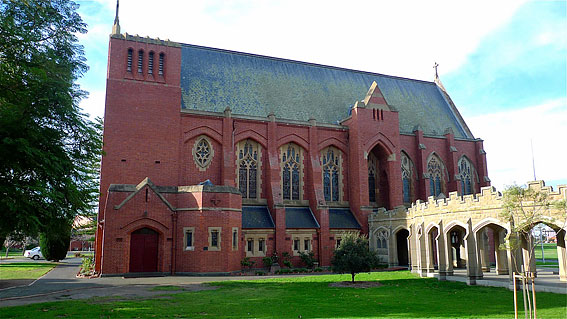
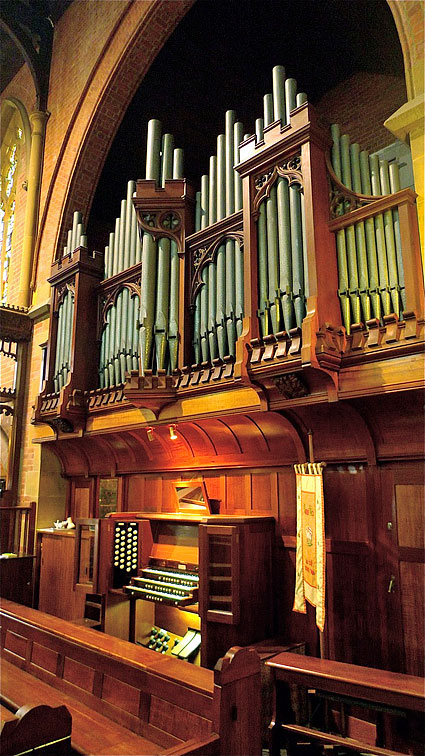
The organ in All Saints’ Chapel was commissioned by Niel Walter Black (1864-1909), the son of prominent Scottish-born Victorian pastoralist and politician Niel Black (1804-1880). He was educated at Geelong Grammar School, Ormond College at the University of Melbourne and Emmanuel College at the University of Cambridge. In Cambridge, the firm of Hill & Son had a very strong foothold and it is possible that Black may have met Dr A.G. Hill, the head of the firm. It is not surprising therefore that Black chose it to build a large organ for his new mansion, ‘Dalvui’, at Noorat, in Victoria’s Western District. The house was designed by architects Ussher & Kemp and built in 1907. Henry Hardie Kemp, had a strong association with the Presbyterian Church and designed many houses together with the Assembly Hall, Collins Street, Melbourne, and the earlier parts of Scotch College, Hawthorn, including the Memorial Hall. Kemp designed the Gothic organ case of the Hill & Son organ.
Hill & Son’s order number 2371 records that the order for the organ was placed in March 1908. The instrument was installed at ‘Dalvui’ in April and May 1909 by George Fincham & Son, its team headed by Herbert M. Palmer, who had recently joined the firm from Hill & Son. The cost of the organ in England, given by E.N. Matthews, was £1,340 but by the time duty, freight, wharfage, cartage and erection costs were added, it came to the grand total of £1,957,8s. With the 1892 organ imported by Robert Andrews for ‘Frog Hollow’, Leichhardt, Sydney, of equivalent size, these were the largest residence organs sent out to Australia by the Hill firm.
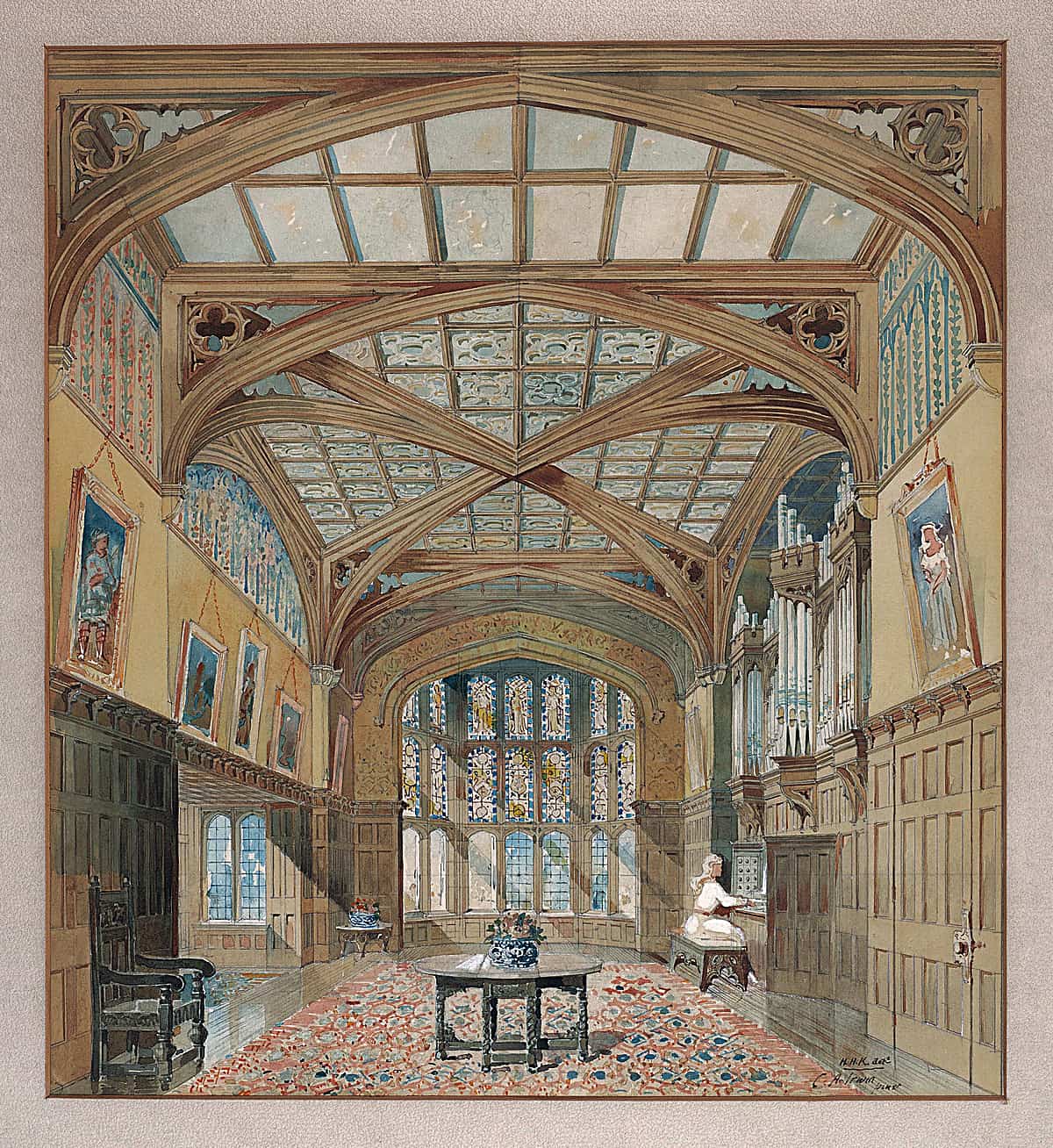
'Dalvui', residence of Niel Walter Black, Mackinnons Bridge Road.
1909 three- manual Hill & Son organ installed in dining room.
The illustration is of the design for the dining room and organ case prepared by Ussher & Kemp, architects.
The specification recorded in the Hill order books was as follows:
GREAT C |
16 8 8 8 4 4 2 16 8 8 8 8 4 3 ranks 8 8 8 8 8 8 4 8 16 16 8 |
(soundboard Taylor & Son 6’0” rod) w & m scale 4 scale 1 scale 4 scale 5 bass scale 5 scales 5 & 7 scale 5 (soundboard S. Monk 6’6” rod) scale 4 scale 13 TC scale 14 scale 5 scale 9 scale 2 (in box) (soundboard Taylor & Son 6’0” rod) scale 15 scale 12 TC scale 16 [“Dulciana wave”] scale 2 (from Bourdon) |
Electric blowing
Emergency hand feeders
Tubular action
Mahogany case
Spotted metal front
Ivory knobs
Wind pressure: 2¾ inches
Balanced swell pedals
4 thumb pistons to Great & Pedal
4 composition pedals to Great & Pedal
4 thumb pistons to Swell
3 thumb pistons to Choir
1 poppet Great to Pedal
The organ occupied a space that measured 18 feet wide, 9 feet 3 inches deep and 19 feet 3 inches high. The console opening was 6 feet wide and it projected 3 feet from the casework. It was located in an alcove or chamber to one side of the baronial dining room that rose through two stories. At the end of the room was a colossal stone mullioned bay window and opposite the organ a fireplace carved by Robert Prenzel.
Very shortly after the completion of the organ, Niel Walter Black departed for England on the SS Waratah. In July 1909, this 500 foot steamer, en route from Durban to Cape Town, disappeared with 211 passengers and crew aboard. The disappearance of the ship remains one of the most baffling nautical mysteries of all time. My grandfather Percival Thomas Maidment recalled in the 1960s being on the last ship that sighted the Waratah before it vanished. Apparently the ship was top heavy and unstable and may have been knocked over by a giant wave. Black perished in this disaster.
As Niel Black was unmarried, his estate was disposed of by his two brothers. The removal of the organ to the Fincham factory was discussed in a letter to S.G. Black written on 20 January 1911. In April 1911, in the Grammar School Quarterly, it was reported:
“Messrs. S.G. and A.J. Black, of Noorat, have, it is announced, presented to the Council of the School a fine organ, valued at £1400, to be erected in the chapel of the new school, in memory of their brother, the late N.W. Black.”
On 19 May 1911 George Fincham & Son supplied its dimensions to T.E. Bostock, from Geelong Grammar School. Niel Walter Black’s brothers, apart from giving the ‘Dalvui’ organ to the school, also presented the organ case and the electric blower and covered all the expenses of erection. It was placed within a low-roofed organ chamber in the new All Saints’ Chapel in 1915 by George Fincham & Son. The opening recital was given by Mr A.E. Floyd on All Saints’ Day 1915, who performed works by Chopin, Pollitt, Mendelssohn, Elgar, Dubois, Handel, S.S. Wesley and Bache – Floyd had only recently arrived from England to take up the post of Organist at St Paul’s Cathedral, Melbourne.
The chapel had been erected under the direction of architect Philip Hudson, who was later to design the Shrine of Remembrance in Melbourne although there was considerable dissatisfaction about the detailing of its windows, whose tracery was later revised by the distinguished ecclesiastical architect Alexander North.
Steuart Black, writing in The Corian, December 1915, recalled his brother:
“After many years of suffering [from serious ill health] he seemed to be gaining a modicum of strength, and it was at this time that he started to build a house for himself. The central feature that dominated the whole plan was the organ and organ chamber. At length, when the house was built and the organ almost in place, he made up his mind to run over to England for a few months before settling down in his new home, and he only delayed his sailing till the erection of the organ was completed and he had satisfied himself that all was right. This it was that determined his sailing in the ill-fated “Waratah.” It will thus be seen that this organ was the one central and controlling factor, not only of his life, but in his death, and it seemed to us that no memorial was so truly a memorial of him as this organ, and no place was so suitable in which to place it as his old school, where some of his happiest days had been passed, and which was rising anew in new surroundings, but with all its old traditions intact and, perhaps, even strengthened, by having passed through the fire of removal from time-honoured associations, and where its voice may help to lead future generations of his school fellows to the same true love for sweet and holy things which meant so much to him.”
According to a letter dated 13 May 1918, the organ was dismantled and stored that year by George Fincham & Son, presumably when Alexander North’s work was being undertaken in the building.
However, tonal egress from the organ chamber continued to be unsatisfactory (this may be observed in an early photograph) so when the nave of the chapel and western façade were completed in 1929 under the direction of the architect Louis R. Williams, the organ was removed and the roof of the organ chamber raised to its present height. This work was apparently carried out by Keith M. Lavers, who maintained the organ and took nearly two months to carry out the installation, although Hill, Norman & Beard also quoted for the work. During the 1930s, William McKie, who was Director of Music at the school, prepared several schemes for the enlargement of the instrument in association with Hill, Norman & Beard, one of these of four manuals and incorporating a west-end division. Clearly the light-toned voicing of the instrument on 2¾ inch wind, was quite inadequate for the enlarged space.
The organ was finally rebuilt in 1958 by J.W. Walker & Sons Ltd, of Ruislip, Middlesex. New electro-pneumatic action and a new drawstop console were introduced and there were a number of tonal additions, many of these achieved through the extension of existing Hill material. Clearly considerable revoicing took place at this time on higher wind pressures by the firm’s voicer Walter Goodey but the overall result is nevertheless an instrument of some distinction. The instrument has, more recently, had its mechanisms upgraded by Australian Pipe Organs Pty Ltd, who maintain the instrument, and the Great Mixture has had its composition revised to eradicate the Tierce rank that had been present.
GREAT |
16 8 8 8 8 4 4 2-2/3 2 III 8 8 8 8 8 4 2 III 8 16 8 4 16 8 8 8 8 8 4 4 4 2-2/3 2 1-3/5 8 8 4 16 16 16 16 10-2/3 8 8 4 16 16 8 |
A A E 15.19.22 B TC 19.22.26 C C C (enclosed except Trombas) D D E TC D E D D B B F A G D G F G G B C B |
Great & Pedal combinations coupled
Compass: 61/30
Electro-pneumatic action
Attached drawstop console
Adjustable thumb & toe pistons
Balanced mechanical swell pedals to Swell and Choir
At ‘Dalvui’, the site of the organ is still clearly evident. The panelling where the console was located has been filled in and is of a different colour timber from the surrounding panelling, while the three corbels upon which the projecting towers of pipes rested still remain. The arched opening to the organ chamber above has been filled but the space behind remains although reconfigured into two stories. Sadly, no photographs of the organ in its original home are known to exist although one of Kemp’s drawings of the dining room shows the organ. The architect Henry Kemp was later to design an organ case for the Frederick Taylor organ at St John’s Presbyterian Church, Warrnambool that was clearly based upon his earlier exercise at ‘Dalvui’.
I am grateful to Tom Healey, at the time Director of Performing Arts, Geelong Grammar School, for his help in providing material from the school’s archives; also to Peter and Pam Habersberger for showing me over ‘Dalvui’.
George Fincham & Son letter books (State Library of Victoria)
Garry Carnegie, Pastoral Accounting in Colonial Australia, p.96
E.N. Matthews, Colonial Organs and Organbuilders. Carlton: Melbourne University Press, 1969, ppp.102-3.
Wikipedia article: http://en.wikipedia.org/wiki/Waratah_(ship)
Specification noted 1966
John Maidment July 2010 based upon an article that appeared in OHTA News January 2009.
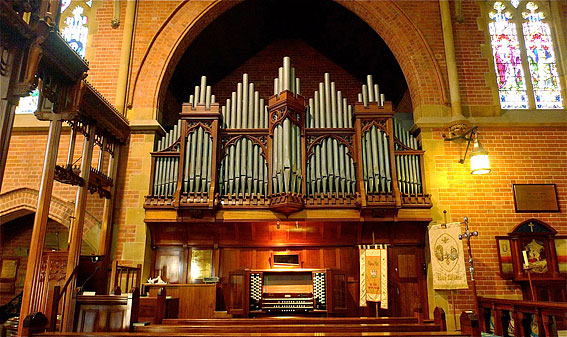
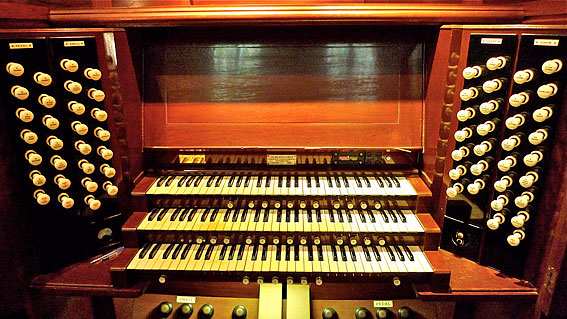
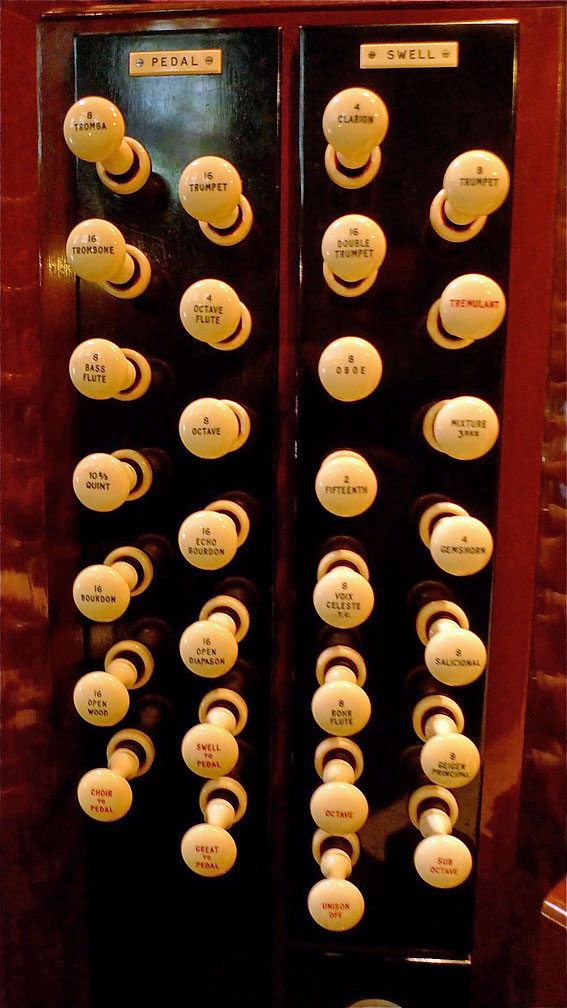
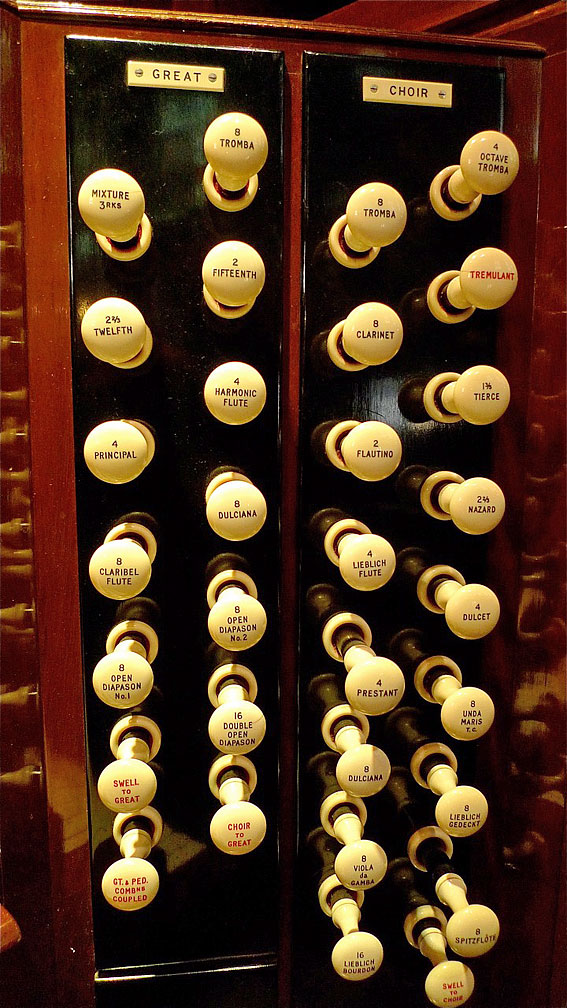
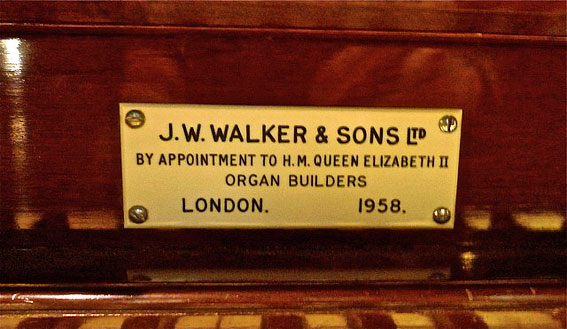
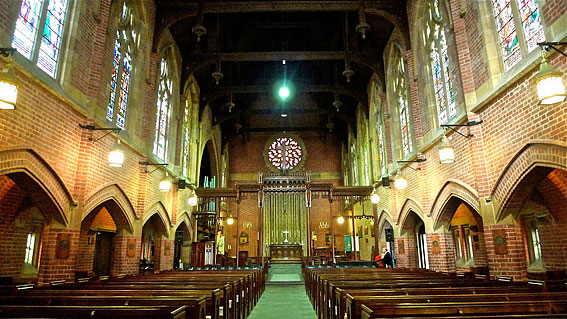
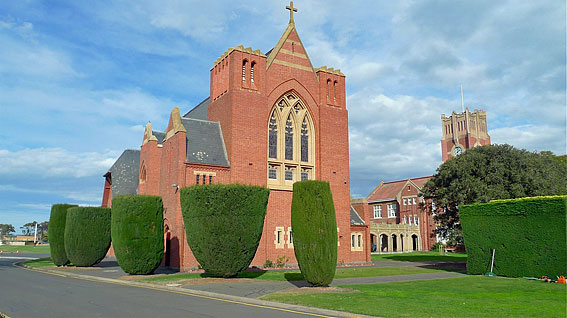
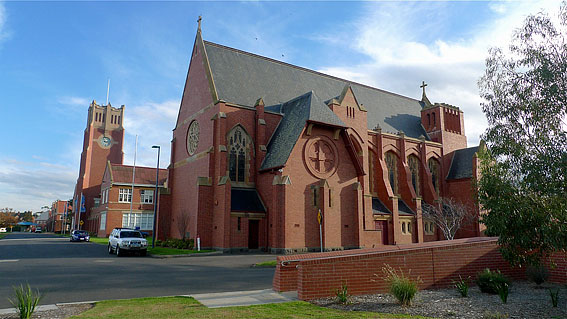
Photos: Trevor Bunning (June 2010)